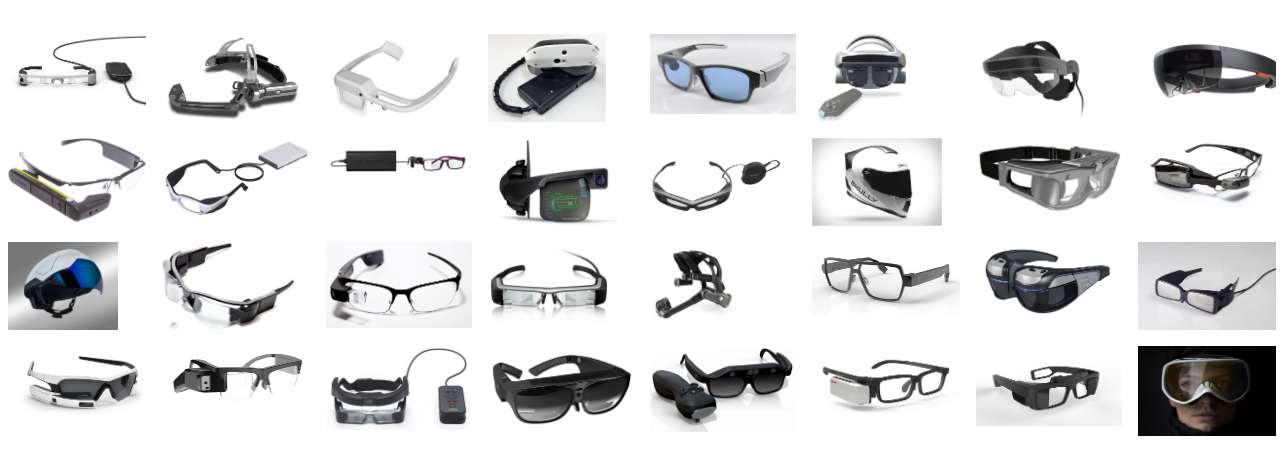January 13, 2019
Augmented Reality Eyewear: The Race to Consumer Affordability
In recent times, the tech world has been buzzing at a rapid pace regarding the new technology that has emerged over the last few years. Technological advances such as Machine Learning, AI (Artificial Intelligence), IoT (Internet of Things), Image Recognition, VR (virtual reality), and AR (augmented reality) have really taken the industry by storm; and are ushering in a plethora of new products and changes to our daily functions. Developers everywhere are clamoring to utilize and invent exciting ways to apply these new technologies. We are at an interesting age of discovery where every product and idea has the potential to set a lasting standard and impact on multiple generations to come. One of the most intriguing and potentially impactful of these technologies to the general public is Augmented Reality, or AR.
Augmented reality, or AR, is defined as technology that superimposes computer-generated imagery onto a user’s view of the real world, thus providing a composite view. While some still view AR as a gimmick or just something interesting to look at, the truth is AR is slowly changing the way we interact with the world around us. It presents a brand-new way of engaging with products, machinery, people, and just about anything visible to the human eye or camera lens. Augmented reality is having a profound impact on navigation systems and will soon be common place as part of the HUD (heads-up-display) in most vehicles. We have already seen the impact of AR on the gaming and shopping industries with the highly successful Pokemon Go™ mobile game and the many room measuring and furniture placement tools like AirMeasure, Lens.io and Amazon’s AR View.

While these products are good examples, they only scratch the surface of what AR can offer. In order for augmented reality to really take-off and gain wider adoption, it requires readily available access as well as the ability to be hands-free.
Current AR hardware is primarily limited to mobile devices, other camera accessible hardware, or an expensive group of AR-dedicated headsets and eyewear available for purchase. Most people in the general public experience augmented reality through their mobile devices. Smartphones and some tablets are capable of recognizing and reading spatial data — referred to as SLAM — while over-laying anchored visuals. The problem is that while viewing or utilizing augmented reality on a mobile device users are unable to use that device for other functions; such as talking, texting and browsing the internet.
That’s where dedicated augmented reality eyewear comes in. With dedicated eyewear, users can be presented with augmented elements without the need to manually access their mobile device or strap it to their face. Current cost for AR eyewear ranges from around $1500 to $3500 U.S. dollars. Magic Leap’s headset, the Magic Leap One, was touted as being the platform to bring affordable AR eyewear to the general public. In that feat Magic Leap failed miserably, as the Magic Leap One retails for a whopping $2,295. The other players in this class — and there are not that many — are all equally as expensive. Microsoft’s HoloLens, said to be the most widely used AR hardware, sells a developer edition for $3,000 and a commercial edition for $5,000. Meta’s META2, another solid AR device, retails somewhere between $1,200 to $1,495 U.S. dollars. The Google Glass originally retailed at $1,500, but since that device has been discontinued I won’t include it as an available option for augmented reality eyewear.

Given the rise in smartphone prices, it’s nearly impossible for consumers to justify shelling out an additional $1,500 to $2,000 for hardware whose everyday usage is still to be determined. For this reason, there is a definitive push to make augmented reality eyewear more accessible and affordable to the public.
This obvious opportunity in the industry has caught the eye of larger mobile brands and many other companies, who are pouring money and resources into developing affordable AR eyewear for consumers. Apple recently announced they were working on a pair of AR glasses targeted to be available sometime in 2020. Chinese mobile giant Huawei unveiled plans to release augmented reality eyewear in the next year or two. Samsung revealed an experimental AR headset they’re currently using in testing for a rumored AR headset based on their Gear VR technology. Newcomer Vuzix recently released the Blade, their stylish new pair of AR glasses retailing for $999. Microsoft and Facebook are filing new patents signaling their venture into the development of smaller, more affordable AR eyewear. Additionally, other forms of AR eyewear were on full display at the 2019 Consumer Electronics Show.

The race has begun. More and more affordable augmented reality eyewear and devices will start to pop-up over the next few years. I estimate $399 to $599 to be the target price range for widespread consumer buy-in, but I do not have any statistics to support that claim. As mobile manufacturers improve device processing power in smaller form factors, it only helps to improve the quality of consumer AR products sooner to define the next generation of computer interfaces.
Personally, am looking forward to the many devices that will come out of this push for affordable augmented reality. So, stay tuned as it should be a fun ride.